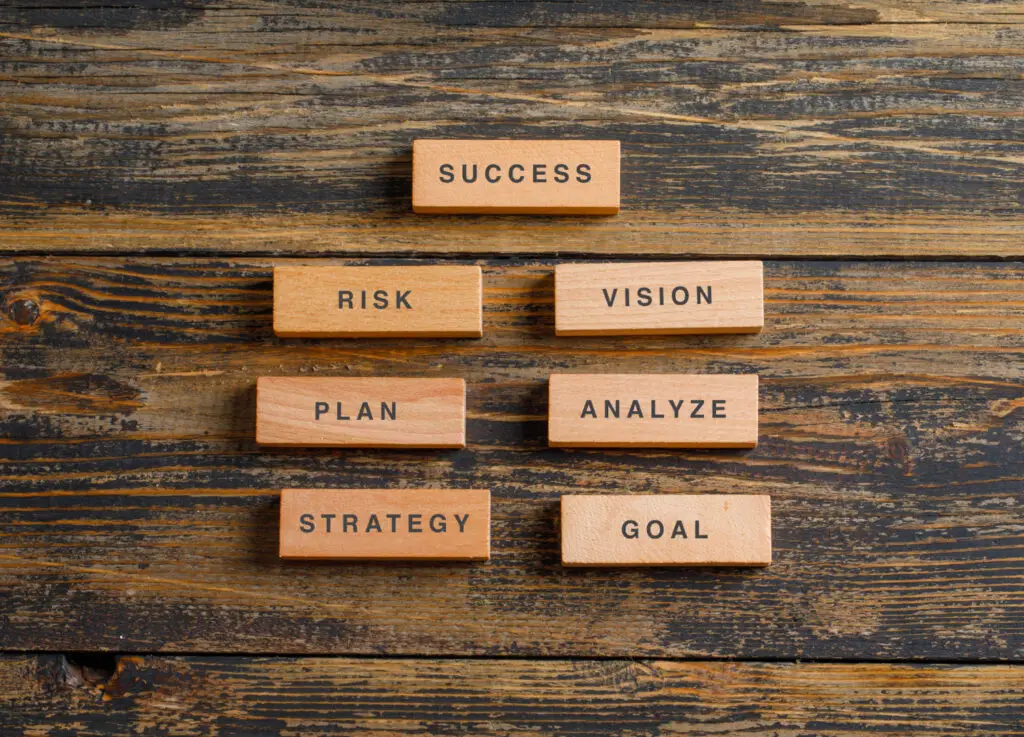Self improvement isn’t just taking ten minutes out of your day to use a meditation app. It’s a mindset you can cultivate to force you to improve at every area of your life, both personally and professionally.
This is particularly true for marketing professionals.
Success in marketing often relies on creative thinking and innovative approaches. Self-improvement fosters a mindset that encourages originality, helping people generate fresh ideas and solutions to meet the demands of a constantly evolving market.
1.) Mindset Mastery for Self Improvement
Our mind is all we have. Our thoughts shape our reality. The quality of our mind is perfectly correlated with the quality of our life.
Why not, then, try and improve our mental resilience, enhance our focus and foster more positive outlooks in order to improve the quality of our life and our work?
The result of this would go far beyond our career trajectory. Some things are more valuable than meeting quotas.
Shifting Perspectives for Peak Performance
In the book “Mindset: The New Psychology of Success” by Carol S. Dweck, Dweck introduces the idea of two main mindsets that individuals possess. The fixed mindset and the growth mindset.
Fixed Mindset
Individuals with a fixed mindset believe that their characteristics, namely their strengths, talents and intelligence are set in stone.
People with a fixed mindset are less likely to engage in challenges, mainly due to their fear of failure. They see no value in working on their weaknesses as they believe their weaknesses cannot be changed. They were just born this way. In addition, criticism is often taken personally, and setbacks are simply viewed as a reflection of their inherent capabilities.
Growth Mindset
In stark contrast, individuals with a growth mindset believe their attributes are fluid; that they be improved with effort, learning and time.
They embrace challenges, view failures as opportunities for growth, and see effort as the path to mastery. Feedback is seen as valuable input for improvement.
The Choice is Yours
As for which mindset to adopt for yourself, the choice seems glaringly obvious. After all, all the things that we excel at today, we were once beginners at.
Sure, we all have had certain talents for things. You may be a natural athlete that picks up sports easily, or a math-wiz who showed promise in both mathematics and physics.
But no one, and I mean no one, got to the top without putting in effort.
Tiger Woods would famously arrive at the golf range before sunrise. Michael Jordan would practice alone for 3-4 hours a day, outside his regular team practice and weightlifting sessions.
Whichever mindset you adopt, each a is a self-fulfilling prophecy. As Henry Ford said: “There are two kinds of people: Those who think they can, and those who think they can’t, and they’re both right.”
2.) Time-Management Tricks for Maximum Productivity
We all want to get more done.
Well, more precisely, we want our team and employees to get more done. Even better than this, we want our team to want to get more done (am I still making sense?).
The best productivity hack, in my opinion, is motivation. However, motivation is fleeting, often impacted by things such as overwhelming information, menial tasks and an unclear understanding of which projects to prioritize.
The Eisenhower Matrix
The Eisenhower matrix helps people prioritize tasks by assigning them into four categories (or quadrants) based on urgency and importance.
The matrix was popularized by Stephen Covey in his best-selling book “The 7 Habits of Highly Effective People,” but it’s often attributed to former U.S. President Dwight D. Eisenhower.
Quadrant I – Urgent and Important
Tasks in this quadrant are both urgent and important. They require immediate attention and are crucial to your goals and well-being. Examples include deadlines, crises, and important meetings.
Quadrant II – Not Urgent but Important
Tasks in this quadrant are important but not necessarily urgent. They contribute to long-term goals, personal development, and proactive planning. Examples include strategic planning, relationship-building, and skill development.
Quadrant III – Urgent but Not Important
Tasks in this quadrant are urgent but not particularly important. They often involve distractions or tasks that can be delegated. Examples include some emails, phone calls, and meetings that may not contribute significantly to your goals.
Quadrant IV – Not Urgent and Not Important
Tasks in this quadrant are neither urgent nor important. These are time-wasters that should be minimized or eliminated. Examples include unnecessary social media browsing or some routine administrative tasks.
3.) Habit Formation: Automate Your Processes
What if we made everything we know we should be doing, into something that was so ingrained into our psyche that it was simply automatic?
When we give ourselves the choice to do or not do something, it creates a battle in our minds. We consciously and subconsciously weigh the pros, cons and often the inconvenience of doing something.
For example, if we give ourselves the choice to either go to the gym or stay at home, our mind will start running stories of both decisions. And, being human, we are likely to choose the option that requires the least effort, the least struggle, and the least inconvenience. Even when it is not in our best interest to do so.
This is where habits come in.
The Four Laws of Behavior Change
“Atomic Habits: Tiny Changes, Remarkable Results” by James Clear has been a self improvement best seller for over five years.
He introduces the four laws—Cue, Craving, Response, and Reward—that shape habits.
Understanding how to manipulate these components help individuals in building or breaking habits effectively.
1. Cue
The Cue is the trigger that initiates a habit. It is a signal or context that prompts the brain to start a particular behavior. Cues can be external (such as a specific time of day or a location) or internal (like an emotion or a preceding action).
2. Craving
Craving is the desire or motivation triggered by the cue. It’s the emotional or psychological response that drives the individual to seek the associated reward. Cravings make the habit loop more engaging and reinforce the behavior.
3. Response
The Response is the actual behavior or action prompted by the cue. It is the habit itself. This can be a simple or complex action, depending on the habit in question. The response is the means by which the individual addresses the craving.
4. Reward
The Reward is the positive outcome or satisfaction obtained by completing the habit loop. It reinforces the behavior and satisfies the craving. Rewards create a positive association with the habit, making it more likely that the individual will repeat the behavior in the future.
Let’s analyze a real-world example for a marketing professional.
At 9:00am, your calendar alerts you that you need to post content on your business’ social media account. This is the cue.
The craving can come both from the desire to increase engagement and visibility to their brand as well as the personal satisfaction and recognition for completing the task well.
The response would be a direct result from both the cue and the craving. The professional might start brainstorming ideas or talking with colleagues about current events that could shape the type of content that would get more engagement.
The reward (which is often the most overlooked aspect), would come both in the form of positive engagement with the posted content as well as the personal recognition from a colleague or superior of a job well done.
Putting It All Together
These are just three of the most valuable self improvement strategies that you can start implementing in your life and your business. Individually, they all possess the power to greatly improve the quality of your work and your life. The real joy, in my opinion, will not come from the mastery of all three of these strategies, but from taking the first steps to improve in all the areas above.
If you can enjoy the process for the sake of only the process, and let the results fall where they may, you will avoid the frustration that comes with a results-orientated state of mind.
The only person you should be comparing yourself to is the person you were yesterday. Don’t focus on the CEO who rose to the top of the industry in 3 years or the sales rep who just bought his third investment property in record time. If you can just be 1% better than you were yesterday, you are lightyears ahead of the competition.










0 Comments